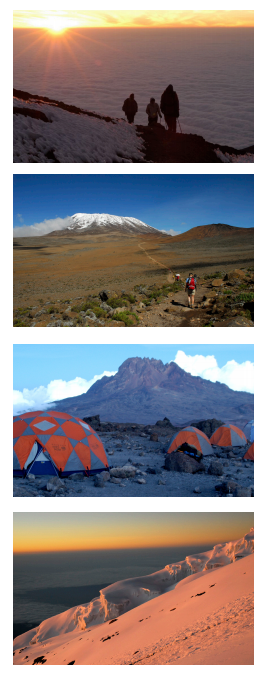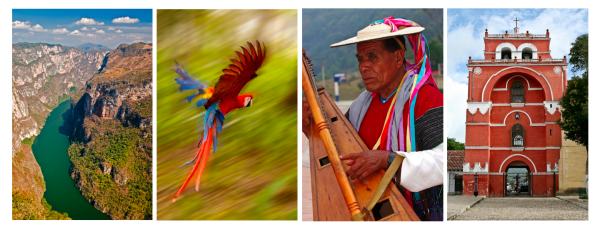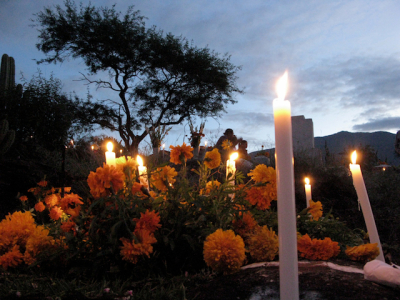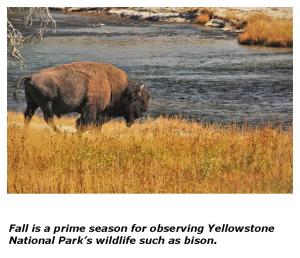This guest blog is by Irene Lane, founder & president of Greenloons.com.
Have you noticed how companies of all sizes are touting their local credentials these days? Whether you are shopping at your local supermarket or deciding on your next vacation destination, advertisements are replete with images of locally sourced fresh food or locally guided unique vacation services.
 And why not? “Buy local” and “local first” campaigns are speaking to our fundamental values to help our local communities before purchasing goods and services provided by large conglomerates. However, in an effort to align with our ideals, some corporate localwashing has also surfaced within the ecotourism industry since the eco-traveler is one that seeks an authentic connection with people and nature. Examples of localwashing by ecotourism businesses include ones that:
And why not? “Buy local” and “local first” campaigns are speaking to our fundamental values to help our local communities before purchasing goods and services provided by large conglomerates. However, in an effort to align with our ideals, some corporate localwashing has also surfaced within the ecotourism industry since the eco-traveler is one that seeks an authentic connection with people and nature. Examples of localwashing by ecotourism businesses include ones that:
- emphasize local guides and services only to be foreign owned and managed
- do not purchase any local items such as produce, raw building materials, crafts or furniture but advertise as authentically local cultural experiences
Rather than agonizing over online reviews, guide books and definitions of local-sourced and sustainable tourism; instead use these five planning tips that will help quickly evaluate the local merits of your vacation:
- Look for legitimate eco-certification labels
- Choose travel suppliers that support local communities in multiple ways
- Support tourism providers that specifically offer locally produced items:
- Choose activities that emphasize environmental awareness
- Search for opportunities to immerse yourself in local cultural traditions
“MOUNTAINS FOR WATER” KILIMANJARO CLIMB WITH ELEVATE DESTINATIONS.
 Begin the new year with an adventure that will make a difference.
Begin the new year with an adventure that will make a difference.
Climb Mount Kilimanjaro in Tanzania, the highest peak on the continent of Africa, and the tallest free standing mountain on earth while fundraising to construct a water reservoir for a community in need in Northern Kenya. The seven-day trip from Elevate Destinations starts at machame Gate, ascending via Stella Point, with a nighttime ascent to the summit.
A few spaces remain open for interested climbers who care about how drought is affecting East Africa, most specifically, Northern Kenya.
In 1998-2000, Kenya experienced a two year drought. Ongoing issues have prevented communities, livestock and wild animals from having enough water to drink. Daily, Samburu women have to walk for an hour or more to collect water. The shortage of water means ill-health and dehydration within the whole community - often leading to the prevalence of Trachoma, a leading cause of painful blindness. Reservoirs are of huge benefit to alleviate damage in times of drought.
The plight of this community is serious, and you can make a tangible difference. This climbing effort will raise funds to construct a rainwater reservoir, which will benefit a local community for decades to come.
Tell people you’re headed to Mexico and you’ll likely be warned to be careful, to reconsider, or even encouraged not to go at all. However, after living and working in Mexico for the past five months, I am happy to report that the country remains a warm, welcoming, and, with the exception of a few cartel hotspots, a safe place to visit.
But don’t just take my word for it. Follow the lead of more than 600 travel professionals (myself included), representing some 50 countries, who gathered recently (October 16-20, 2011) in San Cristobal de las Casas, a quaint colonial-era mountain town in the highlands of Chiapas, Mexico, for the industry’s most important annual event, the 2011 Adventure Travel World Summit*.
 In place of fear-inspiring headlines, greeting us in Chiapas and across the country, were hospitable locals, colorful colonial-era cities, culturally-rich indigenous communities, lush tropical rainforests, cloud-cloaked mountain ranges, deep river canyons, cattle-dotted ranch lands, and pristine coastal plains.
In place of fear-inspiring headlines, greeting us in Chiapas and across the country, were hospitable locals, colorful colonial-era cities, culturally-rich indigenous communities, lush tropical rainforests, cloud-cloaked mountain ranges, deep river canyons, cattle-dotted ranch lands, and pristine coastal plains.
For those ready to journey beyond the headlines and discover the real Mexico, here are eight hand-picked adventures from trusted adventure outfitters.
Day of the Dead is one of the most important and impressive festivals in Mexico. Yet many of the most authentic ceremonies remain inaccessible to outsiders.
Travel beyond the guidebooks with small-group, cultural tour company, Traditions Mexico, and experience unparalleled access to Day of the Dead ceremonies deep in the Oaxaca Outback and among the Maya of Chiapas with the following two 3-day tours.
1. The Return of the Souls. Day of the Dead in Outback Oaxaca. October 31 - November 2, 2011.
 Oaxaca © Eric Mindling
Oaxaca © Eric Mindling
Beautiful, moving and fascinating and in the midst of the most lovely time of year, Day of the Dead in Oaxaca is not to be missed. This unique trip takes the celebration even one step further, transporting travelers far beyond the crowds and carnival atmosphere that have become the festival norm around Oaxaca city and into a remote village seemingly lost in time in outback Oaxaca.
Slow down, walk the earthen streets, smell the river scented air, and meet bakers, wood cutters and tamale makers, and truly immerse yourself in a small town’s preparations for the return of the souls of their loved ones. Join them in the candle-lit pre-dawn quiet of the cemetery for this one of a kind ceremony.
|
 When kids go back to school, many adult travelers head to U.S. national parks. Depending on the location, the parks are visited by fewer people during the fall months, and temperatures are typically moderate. No matter where you go, however, there are plenty of appealing activities, as well as lodging choices for every budget.
When kids go back to school, many adult travelers head to U.S. national parks. Depending on the location, the parks are visited by fewer people during the fall months, and temperatures are typically moderate. No matter where you go, however, there are plenty of appealing activities, as well as lodging choices for every budget.
Here are three examples of autumn-season national park adventures:
Death Valley National Park, California. Unlike most national parks, fall is just the beginning of the park’s peak season. Concessioner Xanterra Parks & Resorts operates the luxurious, 66-room Inn at Furnace Creek, which opens its doors for the season in mid-October. Xanterra also operates the year-round Ranch at Furnace Creek. The resort features three restaurants, lounge, gift stores, golf course, swimming pools and more. Activities in Death Valley include golfing at the world’s lowest golf course, horseback riding, Jeep tours, bicycling, tours of historic Scotty’s Castle, hiking and touring by car.


